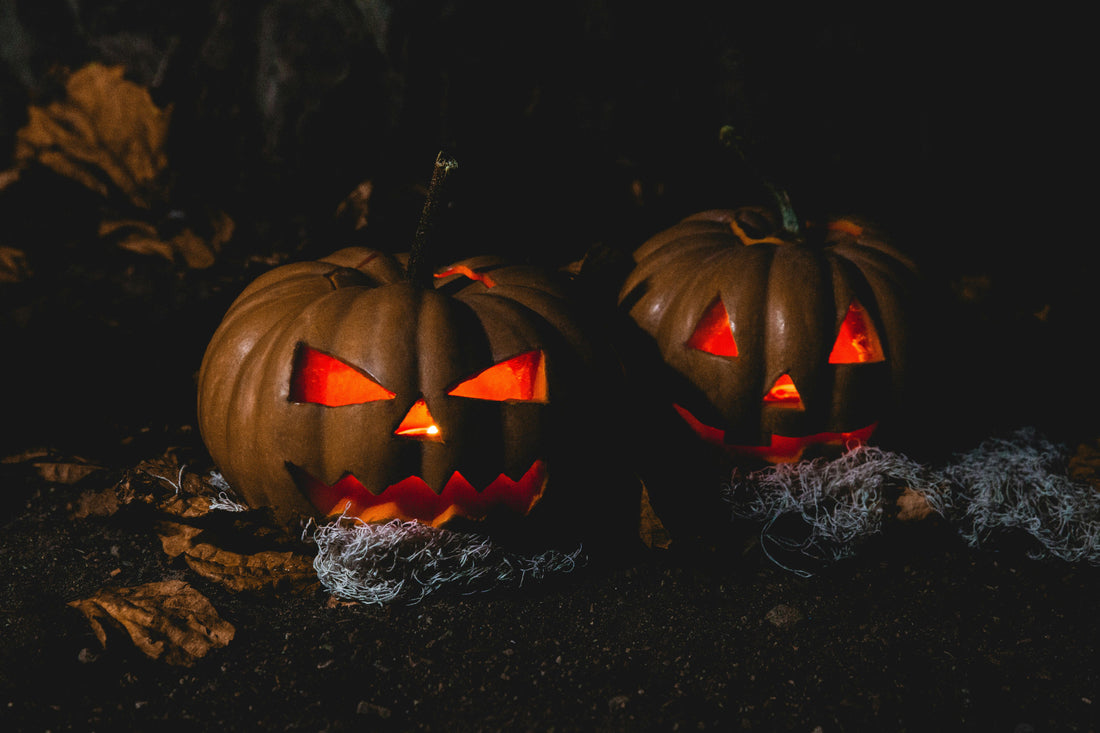What’s the first thing that comes to mind when you think of Halloween?
For most, it’s a mix of candy, costumes, and a healthy dose of fear. As marketers, we know that emotion sells, and fear is one of the most powerful emotions you can tap into. When used correctly, it grabs attention and drives action.
The Halloween season presents a unique opportunity to play with this powerful tool in a way that’s fun, festive, and incredibly effective. Using fear in advertising shouldn’t be about terrifying your customers into submission, but instead, about creating an experience that’s equal parts memorable and engaging.
But there’s a delicate balance. Go too far, and you risk alienating your audience. Don’t go far enough, and your message gets lost in the noise.
This post will explore how you can use fear tastefully and ethically to create spooktacular campaigns that thrill your audience and boost your bottom line. We’ll look at the psychology behind it, why Halloween is the perfect time to get a little scary, and practical tips for pulling it off.
The Psychology of Fear in Advertising
Have you ever jumped at a sudden noise or felt your heart race during a scary movie? That’s your fight-or-flight response kicking in. This primal instinct is designed to keep us safe from threats.
When we encounter something frightening, our brains release adrenaline and cortisol, which heighten our senses and focus our attention. Though it’s often seen as a gimmick reserved for horror movies and the like, marketers can actually leverage this biological response to make their messages stick, too.
Fear creates a sense of urgency that can motivate people to act. A study found that fear-based appeals can be highly persuasive, but only when they also provide a clear, achievable solution to the threat.
Think about public service announcements about smoking. They often show graphic images of diseased lungs to scare you, but they always follow up with a hotline number or resources to help you quit. The fear gets your attention, and the solution gives you a path forward.
You see this tactic used across many industries:
-
Health and Wellness: Ads for supplements or gym memberships often highlight the dangers of an unhealthy lifestyle.
-
Home Security: Companies like Ring or SimpliSafe show unsettling footage of break-ins to emphasize the need for their products.
-
Scarcity Marketing: "Only 3 left in stock!" or "Sale ends tonight!" messages tap into the fear of missing out (FOMO), a powerful motivator for online shoppers.
The Fine Line Between Effective and Off-Putting
While fear can be a potent tool, it can also backfire spectacularly. If your ad is too intense or feels manipulative, customers will tune it out or develop negative associations with your brand. The goal is to cause a brief moment of arousal, not genuine distress. It’s about creating a "safe scare," where the audience knows they aren't in real danger.
Understanding your audience's tolerance (and their intent) is also important. A campaign that works for a brand targeting thrill-seeking young adults might be a complete disaster for a brand focused on families with young children. The key is to know who you’re talking to and what they consider acceptable. Overly graphic or exploitative content can damage brand trust, which is incredibly difficult to rebuild.
Halloween: A Unique Opportunity for Fear-Based Marketing
During October, our cultural relationship with fear changes. What is normally seen as a negative emotion becomes a source of entertainment. People actively seek out haunted houses, scary movies, and spooky stories. This cultural shift normalizes fear, making it more playful and socially acceptable for brands to use in their marketing.
This gives you a golden opportunity to align your campaigns with what everyone is already thinking about. Your spooky ads don't feel out of place; they feel timely and relevant. It’s a chance to show your brand's personality and connect with customers on a more creative and emotional level.
Examples of Halloween-Themed Fear in Advertising
Many brands have mastered the art of the Halloween scare. Their campaigns often use suspense, humor, or mystery to create an experience that’s more entertaining than terrifying.
-
Burger King's "Scary Clown Night": A few years ago, Burger King offered a free Whopper to anyone who came dressed as a clown on Halloween. This was a direct and playful jab at their rival, McDonald's. The campaign used the cultural fear of clowns but framed it in a humorous and engaging way, generating massive social media buzz.
-
LG's "So Real It's Scary" Ad: To promote their realistic TV screens, LG replaced an elevator floor with their screens. When people stepped inside, the screens would flicker and then display an animation of the floor panels falling away. The initial shock and fear of the riders quickly turned into laughter, perfectly demonstrating the product's quality in a memorable way.
-
Fanta's Spooky Snack Cans: Fanta released limited-edition cans featuring monster designs by artist Noma Bar. The campaign included spooky Snapchat filters and a VR experience, turning a simple soft drink into an interactive Halloween activity. The fear was light and cartoonish, appealing to a broad audience.
These examples show that you can use fear without causing genuine anxiety. By blending it with humor and fun, you can create a positive and shareable experience.
How to Use Fear Tastefully in Your Advertising
Ready to craft your own ghoulishly good campaign? Here’s how to do it right.
1. Know Your Audience
This is the most important rule. Before you storyboard a single spooky scene, you need to understand your audience’s preferences and sensitivities.
Are they parents, college students, or working professionals? What are their values? A playful ghost might be perfect for a family-focused brand, while a more suspenseful, psychological approach might work for a tech company.
Always make sure the level of fear aligns with your brand’s overall tone. If you’re known for being wholesome and friendly, a sudden jump into horror might feel jarring and inauthentic.
2. Focus on Solutions, Not Just Problems
Effective fear-based advertising points out a problem but also presents your product or service as the hero that saves the day. Your mission is to frame the fear in a way that empowers your customers.
For example, an cybersecurity company could run a Halloween campaign with the tagline, "Don't let data vampires suck your business dry." The ad could use spooky imagery to represent cyber threats, but the core message would be about how their software provides protection and peace of mind. You're acknowledging a real fear (data breaches) but immediately offering a concrete solution.
3. Incorporate Humor or Playfulness
One of the easiest ways to make fear approachable is to mix it with humor. Puns, funny costumes, and exaggerated scenarios can lighten the mood and ensure your audience knows it's all in good fun.
This is especially true for Halloween marketing. Think of dancing skeletons, friendly ghosts, or vampires complaining about a lack of good coffee. This approach allows you to participate in the seasonal fun without risking your brand's reputation.
4. Stay Ethical and Avoid Exploitation
This is a non-negotiable: never exploit genuine, serious fears in a predatory way. Using a global health crisis, widespread financial insecurity, or personal tragedies as a marketing angle is unethical and will permanently damage your audience's trust.
Instead, stick to imagined fears like monsters and ghosts, or "low-stakes" fears like FOMO. Your credibility is your most valuable asset, so always prioritize ethical and respectful communication.
Practical Tips for Halloween-Themed Fear Campaigns
Let's get down to the nuts and bolts of building your campaign.
Visuals and Design
Your visuals are the first thing people will see, so they need to set the right tone. Use classic Halloween imagery like pumpkins, cobwebs, bats, and ghosts to instantly signal the theme.
Stick to a Halloween color palette of orange, black, purple, and maybe a slime green. You can create a spooky atmosphere with dark, moody lighting and mysterious shadows, but make sure your product and branding are still clearly visible.
Messaging and Copywriting
This is where you can have a lot of fun. Play with spooky puns ("Our deals are so good, it's scary!") or use suspenseful language to build intrigue in your emails and social posts ("Something wicked this way comes... to our new fall collection").
Keep the tone lighthearted and aligned with the playful spirit of Halloween. You can also use playful warnings like, "Caution: Our Halloween sale may cause spontaneous happy dances."
Engagement Strategies
Get your audience involved! Interactive content is perfect for Halloween. Consider creating:
-
A "haunted" email campaign: Use GIFs and spooky designs to create a fun, interactive journey through your latest offers.
-
Social media challenges: Ask your followers to share photos of their costumes or decorations with a branded hashtag for a chance to win a prize.
-
Halloween giveaways: Offer a "mystery box" of goodies or a special discount for a limited time.
Don't Let Fear Scare You Away From Creativity
Fear is a powerful emotion, and when handled with care, it can make your marketing more memorable and effective. The Halloween season offers the perfect excuse to step outside your usual marketing routine and try something new. By understanding the psychology behind fear, focusing on creative and playful execution, and always putting your audience first, you can launch a campaign that’s both thrilling and successful.
Remember to keep it fun, ethical, and true to your brand. A little scare can go a long way in making a lasting impression.
Ready to create a campaign that thrills and converts? The team at Kinetic319 lives for creative, impactful, and ethical marketing. We can help you craft the perfect Halloween-themed campaign or find other clever ways to make your brand stand out. Contact Kinetic319 today to get started!

